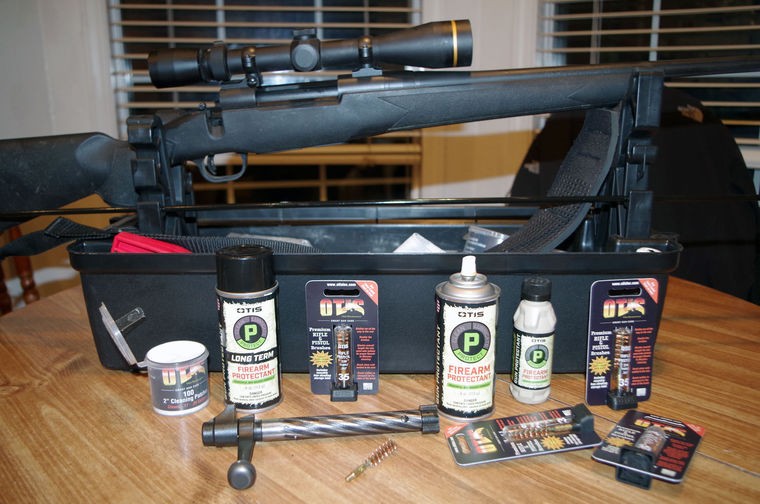Most guns are meant to last for a lifetime. In fact, good ones will be passed on for generations. If you take care of them.
If you don’t, they won’t last a year. My nephew once threw his rifle in a hard case and laid it in the back of his pickup after a deer hunt. He drove home in the driving rain, and unbeknownst to him, the inside of the case got drenched. When he got home, he threw the case with the gun inside into the closet.
The next year I went by to pick up his little brother to take him deer hunting. We went out to the range to sight in his rifle and discovered the disaster. Unbelievably, we were able to salvage the gun. I took it to my gunsmith and he basically sandblasted it and baked on a protective coating.
You should clean your gun every time you go hunting, especially if you encountered inclement weather. Water can seep into all the cracks and crevices and cause rust.
Even if you cleaned your gun when you got home, you ought to give it what I’d call a deep cleaning before you store it for the winter. Or maybe we ought to just say winterize it. I’m a middle-of-the-road cleaner. Some people really go overboard and some barely run a patch down the outside. So with that said, here’s what I recommend.
I use a lot of Otis gun cleaning gear. They make great oils, brushes, patches and cleaning cables. I also have an Otis gun-cleaning station. You don’t have to have a gun-cleaning station, but they sure make cleaning a lot easier. I’d suggest getting one so you’re not trying to balance your rifle on a pile of blankets on the kitchen table while trying to clean it.
To start, let’s begin with the obvious. Make sure that it is unloaded. I can’t believe how many people I read about that have an accidental discharge while cleaning their gun. If it is a bolt action, remove the bolt. With a bolt-action rifle, it’s best to use a bore guide so you don’t damage the crown. A bore guide fits in the back end of your action. Place your cleaning rod in this end.
The crown is the last spot that your bullet touches as it is leaving the barrel. If it gets boogered up, it will cause the bullet not to leave smoothly thereby adversely effecting your accuracy. You don’t want this.
Screw a cleaning tip into the end of your cleaning rod and insert the proper-sized cleaning patch. For years I used an old flannel shirt or sheet to cut patches out of. But it is a lot easier to use manufactured patches. Apply a little solvent and run it up and down the barrel. Let it set for a few minutes so it can break down the fouling.
Remove the tip and screw in a brass brush of the proper size. I like to apply a couple of drops of oil to the end of the brush and then run it up and down the barrel. It will break the fouling loose. Now put back on the tip and run a clean patch through it. Repeat this process until it results in a clean patch.
Use a swab to get at hard to reach spots. Run a light coat of oil over the bolt and put it back in. Then run an oiled patch over the outside of your rifle. To store for long periods of time, Otis also makes an extended-period-of-time oil to use.
On your automatics, you’ll have to break them down to clean all the parts. Time doesn’t allow for me to cover how to break down all the varieties of autos out there. Talk to your gunsmith.
If you’ll take good care of your guns, your family can enjoy them for generations to come.
Tom Claycomb lives in Idaho and has outdoors columns in newspapers in Alaska, Idaho, Utah, Nevada, Colorado and Louisiana. He also writes for various outdoors magazines and teaches outdoors seminars at stores like Cabela’s, Sportsman’s Warehouse and Bass Pro Shop.



